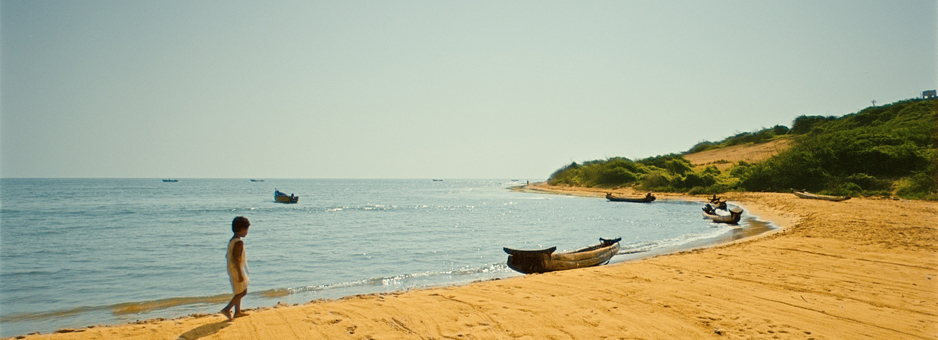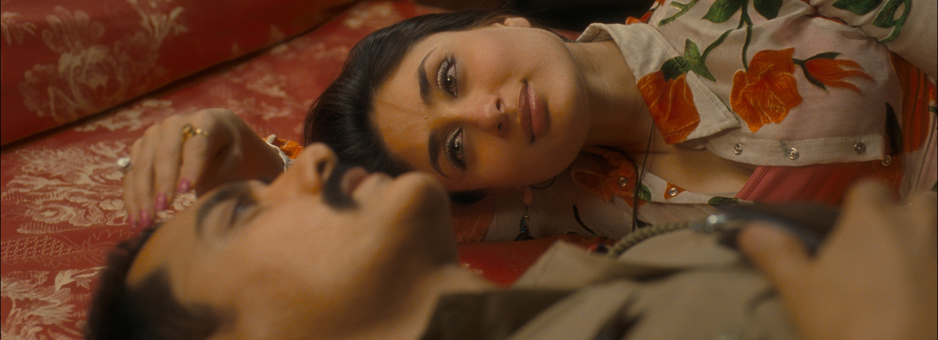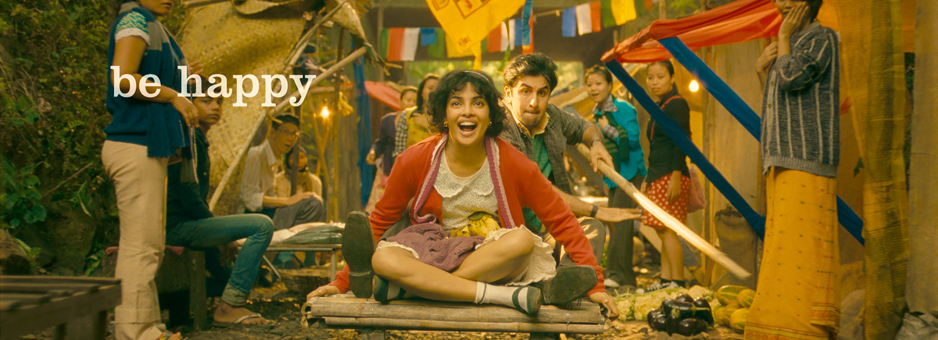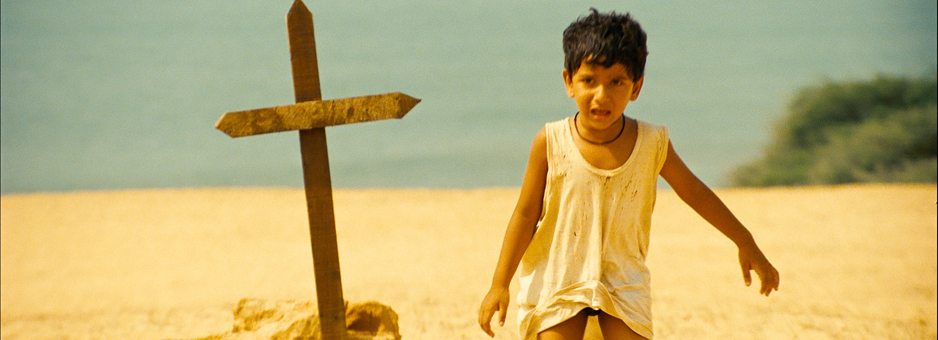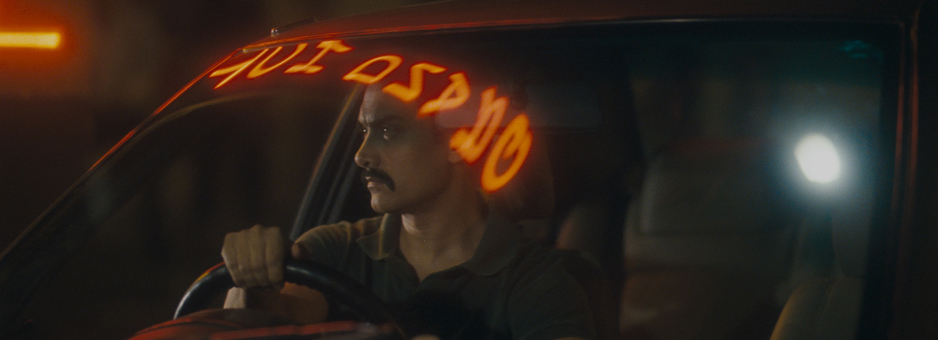Meet The Colourist
Ken Metzker
Senior Colourist, Reliance MediaWorks Ltd.
Colour can really help move a story forward. In this interview we talk with industry-leading talent Ken Metzker, who joined Reliance MediaWorks in Mumbai, India, as senior colourist in August 2007. Ken talks about the every day challenges of colour grading and his passion for creating 'looks' that help to convey an emotion or feeling and help to tell a story.
How did you start out in post? Was it luck or a ready mapped out plan?
I'd like to say it was a ready mapped out plan, but honestly, it was total fluke. I went to photography school for a couple of years after university and at the end of my course I worked on a project that involved creating a commercial for women suffering from domestic violence. At the time, I couldn't afford to transfer the film to video for delivery. To get my diploma I needed to do a practicum, so to kill two birds with one stone I did the practicum at one of these places where they transfer film to video. That was Post Haste Video and my first view of the post industry.
After I finished school and started looking for work as a cameraman, the job offers were very limited and I was running out of cash, so when I got a call from Post Haste Video saying that they needed some help I took them up on it. At the time, I was thinking a few months but it has turned into a full career.
How did you get into the job as a colourist?
My first role in post-production was as 'the coffee guy'. However, the beauty of this role was that I got to meet the clients and see everything that was possible in the grading suites. This is when I realised I wanted to be a colourist.
After putting in some time as a 'tape op' where I worked with and learned from many supportive colourists, I asked my bosses if they would allow me to transfer my friends projects at 'off hours'. I would do the work for free and they would charge the client 50 per cent the regular charge. The company bought into it. I knew I made it a few months later when some clients began asking for me at full rate.
What gives you a buzz about colour?
I remember when I was working with my first colourist, Mykel Thuncher, on that domestic violence shelter commercial for my schooldays; it involved a single burning flame in one of the shots. I watched him pull up this specific scene and begin to rework the image. Once he'd finished, he showed me the before and after comparison and I was speechless. It really gave me a 'buzz' and helped me to appreciate how colour can completely enhance an image.
Colour also has a critical role in storytelling. I love how colour can help convey specific emotions in a scene. It can make the scene richer and less forced and help the flow of the movie. I get a real buzz when I am able to help recreate a time or event with colour, to separate a certain period or location.
What sort of projects do you work on?
I started out working on music videos and then moved to TV series and commercials, but now I am solely focused on digitally manipulating colours on feature films: specifically, Bollywood movies. The movies are twice as long in their running time as those in America so timing the movies can sometimes be twice as challenging as the process is longer and there is usually a large team of creatives involved.
Traditional Bollywood movies are good fun as there is so much variation of colour in one film. Catering for the entire family, one movie may combine four different genres, for example: kids, comedy, romance and action. The new school Bollywood, though, is becoming more and more popular as we begin to see movies tailored to a specific demographic, as well as more independent movies for the domestic audience. The market is changing quickly, which is exciting - especially as we move further into the independent market, as the looks can be much more intense.
What makes for a good day at the desk?
Apart from good coffee, a good day for me is knowing that everyone in the team is on the same page. If I know everyone's in agreement with regards to what the final look should be, I can sit down to grade and feel confident that I can deliver the desired results.
Making film is all about collaboration and it takes a big team of people to be successful. Along with this collaboration, comes some disagreements and a lot of my day can be spent as a visual facilitator. A good day for me is when the DP, Director, Producers and I all have very similar ideas on the vision of the movie and time is spent enhancing and finessing this vision.
What is the best film you have ever worked on? And why?
It is very hard to decide as each project has its own special features. One project, like Talaash, can be really gritty as the setting of Mumbai actually becomes a background character, while other projects, like Student of the Year, can be spent making the characters look beautiful and flawless. I also really enjoy working on movies like Barfi!, as it allowed such scope in creating different looks to separate different times and locations in the characters' lives.
When describing the best film for me, I think of movies where my work has been able to better tell the story. A recent movie that comes to mind is Mani Ratnam's Kadal. Initially, the director was thinking of doing the beginning scenes - which mostly featured the main character as a child struggling with the loss of his mother - in black and white. However, along with the DP, Rajiv Menon, we were able to come up with a look that conveyed what the director wanted but in a much more dramatic way that helped create a mood more suited to the story. We were able to enhance the blue of the ocean, which is an important element of the film, while emphasising the beach with a more monochromatic yellow feel and, overall, gave a dated feel to this section of the film. I love how we were able to make the director happier by helping to create the right mood for the storytelling, while making the images more visually appealing.
How much of a part does technology play in the way you work?
Technology definitely has a big part to play in my role as a colourist.
In the past, the colour timer of the lab had only the brightness of red, green, or blue to finalise the look of the movie. Today, it's not that simple as we have a huge number of tools and techniques that can be applied.
This means we can finesse the image to a much greater degree. This is extremely important nowadays, especially for VFX shots when the colourist is matching VFX with multiple shot elements in one image. Not to mention when a film combines shots from digital capture and stock footage. With all these challenges we can still achieve a consistent look, ensuring the movie flows from scene to scene and giving the entire film its own unique feel.
Another area where technology has really changed the way I work is the speed in which I am able to go from grading to release. Grading used to be done months in advance of a film's release date but today it's done very last minute and time is absolutely critical. We couldn't meet these deadlines without good, reliable technology around us.
However, no matter how important technology is, it is still the people behind the technology that matters most. I have been absolutely blessed with my team at Reliance MediaWorks and we have been able to produce so much quality and creative work because of them and our ability to work as a team.
How does FilmLight's Baselight compare to other technology you've used in the past?
I've been using FilmLight's Baselight for five years now, so as long as I've been at Reliance. I was extremely lucky because when I started in this position I was given the opportunity to choose my team and my equipment. I am very pleased that I chose Baselight.
When I was told I could have any system I wanted, I went off to IBC in Amsterdam to research my options. FilmLight's Baselight quickly became the obvious choice for grading: it was simply a 'no-brainer' for me. We evaluated many possible solutions and found that nothing compared. With Truelight, it is such a well thought out software. Even today I can't think of another system that comes close to the combination of grading tools, real-time grading (no matter what resolution or codecs), ease of use (because it is designed for post with a road map to the future) and colour management system.
A simple example of this is what happens when software crashes, or loses power. When I was researching my options at IBC I pulled the plug on each system I looked at. When I powered the Baselight back up, I was shocked that not even one grade was lost. When working with multiple clients in a fluid session the worst nightmare is to realise you have lost the last 20 minutes of grading. As an experienced colourist I knew the software engineers at FilmLight were thinking about the working colourist when they added this valuable feature.
On the more complex side, Baselight can handle multiple VFX mattes, with multiple VFX versions in an intuitive and timely manner. This allows the colourist working with multiple clients in tight delivery schedules to work efficiently in making the right decisions for the VFX and grading of the VFX. No other system comes close.
Baselight has a way of making complicated things seem simple. The features are endless and powerful, but best of all, the technology is so well thought out: it's almost as if I designed it myself, for me.
Do you find the new generation of "raw" cameras give you more control?
Raw cameras like that of F65, Alexa or Epic allow for great control and are rapidly approaching the image building capabilities of film; and in some specific areas exceeding it. However, in all honesty, I personally prefer to work with content that has been shot on film because of its organic feel.
That said, I have completed the grading of many films captured digitally and have been very happy with the results. The capture dynamic quality and delayering tools of each manufacturers format has improved dramatically since I started grading digital formats. This will continue and it will not be long until I am surprised that I ever favoured film capture, as the digital formats will soon have exceeded the ability of film in all ways.
Once in a while I'll get a phone call from a DP asking what I think would be the best digital camera for a specific production. Through my experience of grading various formats and seeing the final results I am able to offer advice on what camera might best fit their needs in a very unbiased way.
DPs have started to ask more questions and I will often find myself inviting them in to do a test on material before the official production begins. It might be to help them determine the power of lighting that's needed to achieve a certain look and feel, for example, but in the end it allows both of us to understand what can be accomplished in post and what needs to be achieved during production. It also allows the colourist and DP to develop a common visual communication.
DPs today have a lot more knowledge of what goes on in post-production, and vice versa. The gap is closing rapidly and I believe that in five years from now everything will be done on-set and traditional post houses, as we know them today, will no longer exist.
I still see quite a few movies originated on film. Often this is driven by the director who likes the look of film or he'll have been using it for 20 years so will truly understand its potential and how to make it work well. Mani Ratnam's Kadal is an example of this.
Sometimes film is just the right choice as the project might be more suited to it. The director will usually have a preference but budgets and deadlines often get in the way and end up swaying the decision to the digital capture side.
I have two: The Empire Strikes Back and Amores Perros. I love both these movies because they are stories that work on many levels.
The Empire Strikes Back was visually a milestone in VFX. Yet when I saw it for the first time I was so young and it just looked real. Amores Perros is great in a completely different way, as it was one of the first films where I felt the grading added so much to the grittiness and reality of the story.
In both cases the visuals worked so well with the plot and that makes the two movies fly. I know a film has been graded well if I don't notice the colour. For me, if the 'look' is contrived and does not work with, or move the story forward, it's an uncomfortable watch.
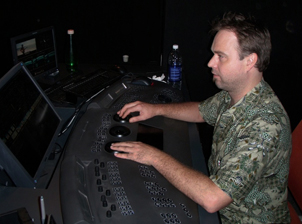
“Baselight is so well thought out: it's almost as if I designed it myself, for me.”
Details
Colourist: Ken Metzker
Role: Senior Colourist
Company: Reliance MediaWorks Ltd.
w: www.reliancemediaworks.com




